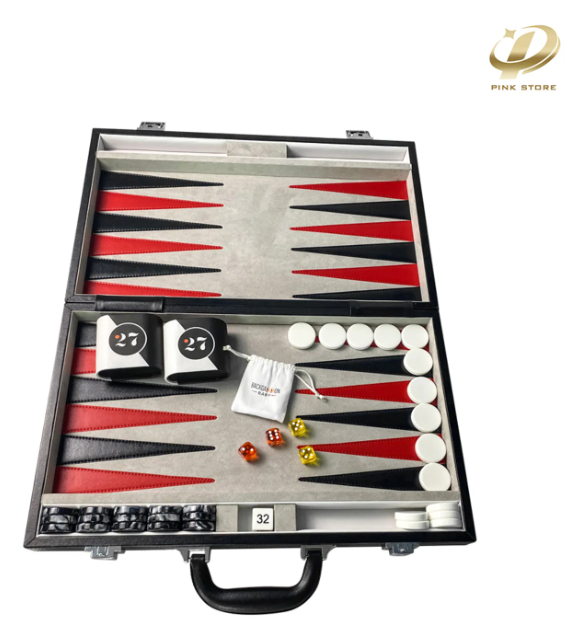
Get A Quote
How to Use a Doubling Cube in Backgammon?
For seasoned players and novices alike, understanding and effectively utilizing the doubling cube is crucial for success in backgammon. It introduces an additional layer of complexity to the game, requiring players to assess their positions, anticipate their opponents' moves, and make calculated decisions to maximize their advantage.
The primary aim of this blog is to equip backgammon enthusiasts with the knowledge and strategies needed to leverage the doubling cube to their advantage. Through clear and comprehensive guidance, readers will gain insights into when to double, how to respond to doubles, and advanced techniques for maximizing the cube's potential. Whether you're a casual player looking to elevate your game or a seasoned competitor seeking to refine your strategy, this blog will serve as your ultimate resource for mastering the art of the doubling cube in backgammon.
Understanding the Basics of the Doubling Cube
Explanation of the Doubling Cube's Functionality
The doubling cube acts as a game-changer in backgammon, allowing players to amplify the stakes and strategic complexity with each move. By turning this cube, players can double the value of the game, leading to heightened tension and excitement.
Initial Stakes and Cube Values
At the outset of each game, the doubling cube starts with a nominal value of one point. However, as the game progresses, players have the opportunity to increase the stakes by turning the cube to values such as 2, 4, 8, and beyond. This escalation of stakes adds a dynamic element to gameplay, requiring players to carefully consider their moves and anticipate their opponents' responses.
Placement and Control of the Doubling Cube
Strategically positioning and controlling the doubling cube are essential aspects of backgammon gameplay. Placed between the two players at the start of the game, the cube remains neutral until one player decides to initiate a double. Once a player accepts a double, they gain control of the cube, allowing them to dictate future doubling opportunities. Mastering the placement and control of the doubling cube is key to gaining an edge in backgammon strategy.
Initiating the Double
Recognizing Advantageous Positions
Knowing when to initiate a double is a skill that separates novice players from seasoned strategists. By recognizing advantageous positions—such as holding a strong board position or having a significant pip count advantage—players can seize the opportunity to double the stakes and apply pressure to their opponents.
Timing the Offer
Timing is everything when it comes to offering a double in backgammon. Players must assess the current state of the game, their own position, and their opponent's vulnerability before making the decision to double. A well-timed double can catch opponents off guard and force them into difficult decisions, while a premature double may backfire and leave the initiator at a disadvantage.
Consequences of Refusal
Refusing a double carries its own set of consequences in backgammon. While declining a double avoids immediate risk, it also concedes the game and results in a loss of points. Players must weigh the potential consequences of refusal against the risk of accepting the double and strategize accordingly to maintain their advantage on the board.
Accepting or Declining the Double
Strategic Considerations
When faced with a double in backgammon, players must carefully assess the strategic implications before making a decision. Factors such as board position, pip count, and game state all play a role in determining whether accepting or declining the double is the optimal choice. By weighing these considerations thoughtfully, players can make informed decisions that maximize their chances of success.
Evaluating Win Probability
Assessing win probability is essential when considering whether to accept or decline a double. Players must calculate their likelihood of winning from the current position and compare it to the potential outcomes of accepting or refusing the double. By conducting a thorough assessment of win probability, players can make strategic decisions that align with their overall game plan and objectives.
Consequences of Acceptance
Accepting a double in backgammon opens up a world of possibilities, but it also carries inherent risks. Players must be prepared to navigate the increased stakes and heightened pressure that come with accepting a double. By understanding the potential consequences of acceptance, players can make informed decisions that reflect their confidence in their ability to navigate the game's complexities and emerge victorious.
Redoubling and Advanced Techniques
Understanding Redoubles
Redoubling adds another layer of complexity to backgammon strategy, allowing players to further escalate the stakes and strategic tension. Understanding when and how to initiate a redouble is a skill that separates advanced players from amateurs. By mastering the art of redoubling, players can keep their opponents on their toes and maintain control of the game's momentum.
Psychological Factors
Psychological factors play a significant role in backgammon, influencing players' decision-making and overall mindset. From bluffing to intimidation tactics, understanding the psychological dynamics at play can give players a competitive edge. By leveraging psychological insights, players can outmaneuver their opponents and gain the upper hand in critical moments of the game.
Incorporating Gammons and Backgammons
Gammons and backgammons add an extra layer of strategy to backgammon, rewarding players who achieve certain outcomes with bonus points. Incorporating these concepts into gameplay requires foresight and calculation, as players must weigh the potential risks and rewards of their moves. By strategically aiming for gammons and backgammons, players can maximize their point potential and secure victory in even the most challenging matches.
Practical Examples and Scenarios

Illustrative Scenarios
To deepen your understanding of doubling cube strategy, let's explore some illustrative scenarios. Imagine you're trailing behind in a game, but you have a strong position on the board. In this situation, initiating a double could catch your opponent off guard and turn the tide in your favor. Conversely, if you're ahead in points but facing a vulnerable position, refusing a double may be the wisest course of action to minimize your losses. By considering various scenarios, you can develop a nuanced approach to doubling cube decisions that maximizes your chances of success.
Analyzing Doubling Decisions
Analyzing doubling decisions is essential for honing your backgammon skills. Take the time to review past games and reflect on the doubling opportunities presented. Ask yourself questions like: Did I correctly assess the game state before offering a double? Did I accurately evaluate my win probability when deciding to accept or decline a double? By conducting a thorough analysis of your doubling decisions, you can identify areas for improvement and refine your strategic approach to the game.
Learning from Practical Situations
Learning from practical situations is key to mastering the art of the doubling cube. As you continue to play and encounter different scenarios, take note of how doubling decisions impact the outcome of the game. Pay attention to the strategies employed by both you and your opponents and consider the implications of each decision. By actively applying what you learn from practical situations, you can enhance your decision-making skills and elevate your performance in future games.
Conclusion
The doubling cube is more than just a game component—it's a symbol of mastery in backgammon. By honing your understanding of doubling cube strategy, you'll gain a competitive edge over your opponents and increase your chances of success on the board. Whether you're a casual player or a seasoned competitor, prioritizing doubling cube mastery will enhance your overall gameplay and enjoyment of the game.
As you continue your journey in the world of backgammon, we invite you to explore the wide selection of backgammon sets available at PinkStore. From classic designs to modern interpretations, PinkStore offers high-quality backgammon sets that will elevate your playing experience. Visit our website today to browse our collection and find the perfect set for your next game night.

